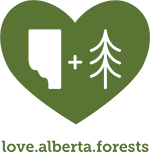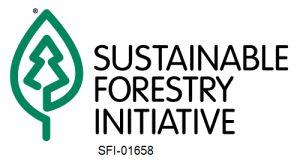Harvest Planning – Ground Rules
The Alberta Timber Harvest Planning and Operating Ground Rules is a document published by the provincial government. It provides direction to the forest industry by defining the forest management principles and objectives for provincial forest lands. The ground rules highlight the current standards and guidelines for timber harvest planning and operations, road construction and reclamation, reforestation and the integration of other forest users and values.
The ground rules represent the regulations pertaining to the Forests Act, the Public Lands Act, the Water Resources Act and the Prairie and Forest Protection Act. Provincial acts such as the Occupational Health and Safety Act and the Surface Rights Act as well as federal acts including the Navigable Waters and Fisheries Acts, must also be recognized during planning and when conducting forest operations.
Many “rules and regulations” are incorporated into a harvesting plan. At the same time, forest management strategies must be flexible enough to allow the incorporation of new knowledge and technology. Adaptive Management is the application of new approaches to plans and operations and can allow us to improve our ability to meet specified planning objectives.
Harvest Design
Development of the preliminary and the final harvest patterns relies on increasing levels of knowledge about the forest areas being planned. Detailed information is actively collected during field assessments and also gathered from government agencies and stakeholders.
Sampling throughout the area provides specific information about the forest. Details about the tree species, how healthy or vigorous the forest is, what other vegetation types there are, slope and soil variability, watershed features, presence of tree diseases or insects and evidence of wildlife use are essential for selecting harvest systems.
Social considerations and existing infrastructure are also noted. Plans must reflect current access routes, recreational activities, commercial enterprises, scenic or visual quality, and other resource values. Known user groups are contacted to promote integration of activities. Government agencies may supply additional perspectives pertinent to the design.
The most intense planning stage occurs once the preliminary design has been approved and road and boundary marking commences. During this phase of planning the greatest percentage of the area is observed. The design may be refined to address site-specific conditions related to topography, timber condition, wildlife or other values based on these observations.
Harvest Method Selection
Timber harvesting is planned to be sustainable. All areas harvested must be reforested. The rate of harvesting is carefully calculated so it will not exceed forest growth. SLS harvest systems include clear cutting, semi-uniform and strip shelter woods and seed tree.
Silvicultural systems focus on both the harvest and reforestation components of forest operations. Both are carefully chosen with sustainability as the key consideration. Harvesting addresses all the steps from cutting the trees to moving the logs to roadside for loading and hauling. Selected systems must match the biological needs of the tree species planned for harvesting and the specific growing conditions of the harvest site. The amount of light, moisture, and frost exposure of the forest floor following harvest are key factors that can effect successful reforestation. The goal is to ensure each area harvested can be successfully regenerated so that new forests can grow.
Sequence Patch Cutting
Lodgepole pine is dominant in over 70% of the forests in Spray Lake Sawmills FMA. In pine-dominated stands, sequenced patch cutting is the preferred harvest method, allowing objectives to be met regarding a spatial harvest sequence and stand retention strategies. Lodgepole pine seedlings have a biological need for direct sunlight in order to thrive. A disturbance that removes the forest canopy, such as patch cutting or fire, will promote lodgepole pine regeneration. This also results in an even aged forest.
Spruce and fir species are more shade tolerant. Both will grow in either full sunlight or partial shade and harvest systems can be adapted to address this characteristic. Regardless of species, appropriate harvest systems must consider the other values to be protected as well as promoting rapid regeneration of the harvested area.



